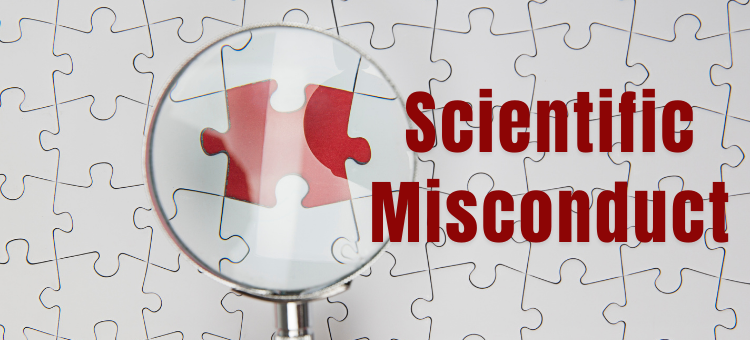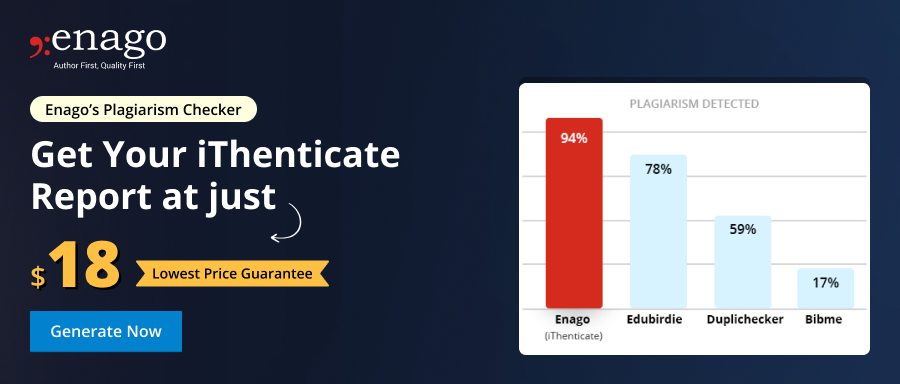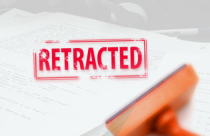10 Types of Scientific Misconduct

Behavior that would be considered scientific misconduct could occur at all points in a research protocol. You could encounter different types of scientific research misconduct at different stages, right from the origination of different types of scientific studies itself to the publication of the results.
Common Types of Scientific Misconduct
Listed below are the top 10 transgressions that peer reviewers and journal editors look for, incorporating content from both the World Association of Medical Editors (WAME), and the US Office of Research Integrity:
- Misappropriation of Ideas– taking the intellectual property of others, perhaps as a result of reviewing someone else’s article or manuscript, or grant application and proceeding with the idea as your own.
- Plagiarism– utilizing someone else’s words, published work, research processes, or results without giving appropriate credit via full citation. Read about the 10 types of plagiarisms to avoid here.
- Self-plagiarism– recycling or re-using your own work without appropriate disclosure and/or citation. Any form of plagiarism can be avoided by using plagiarism checker tools available online.
- Impropriety of Authorship– claiming undeserved authorship on your own behalf, excluding material contributors from co-authorship, including non-contributors as authors, or submitting multi-author papers to journals without the consensus of all named authors.
- Failure to Comply with Legislative and Regulatory Requirements – willful violations of rules concerning the safe use of chemicals, care of human and animal test subjects, inappropriate use of investigative drugs or equipment, and inappropriate use of research funds.
- Violation of Generally Accepted Research Practices– this can include the proposal of the research study, manipulation of experiments to generate preferred results, deceptive statistical or analytical practices to generate preferred results, or improper reporting of results to present a misleading outcome causing ethical issues in research.
- Falsification of Data – rather than manipulate the experiments or the data to generate preferred results, this transgression simply fabricates the data entirely.
- Failure to Support Validation of Your Research– by refusing to supply complete datasets or research material needed to facilitate validation of your results through a replication study.
- Failure to Respond to Known Cases of Unsuccessful Validation Attempts– published research that is found to be flawed should be retracted from the journal that published it.
- Inappropriate Behavior in Relation to Suspected Misconduct– failure to cooperate with any claims of misconduct made against you, failure to report known or suspected misconduct, destruction of any evidence related to any claim of misconduct, retaliation against any persons involved in a claim of misconduct, knowingly making false claims of misconduct.
The rise of AI tools for research, such as AI for research papers and AI for scientific writing, has brought significant advancements to the academic community, but it has also raised concerns about research misconduct. These research AI tools and technologies can enhance the efficiency and quality of academic writing, but their misuse can lead to issues such as plagiarism, data manipulation, and the generation of false or misleading content.
It’s a Question of Integrity
In terms of severity, any misconduct that damages the integrity of the research process, specifically the steps of the Scientific Method, is considered to be a greater transgression than any subsequent misconduct in the publication of research results. Obviously, falsification of data is a much larger transgression than excluding an eligible co-author, raising ethical issues in research.
However, since many of the instances of misconduct listed above can carry severe penalties, including loss of licensure and imprisonment, every effort must be made to distinguish between honest human error and deliberate intent to defraud.











Excellent job. Important stuff, now that it’s happening more and more – even with the internet! What are people thinking – that they won’t ever get caught? He’s a great case of violating several of the above! Has yet to be reported because the press was and still is responsible for its cover-up! Journalists not allowed to talk about it or even investigate it! Even lawyers not denying the charges. Lawsuits could still follow, because it appears there was a cover-up ‘conspiracy’ involving many parties to the plagiarism, fraud and it’s cover-up. What do you do when the PRESS is part of the fraud and is involved in the cover-up, themselves? Who do you go to then? You post here and on social media, that’s what you do! The truth MUST come out and people must be held accountable and punished, even if it means multiple people getting fired – or worse – getting sent to jail! That’s the kind of message that must be sent, if things are to get better!